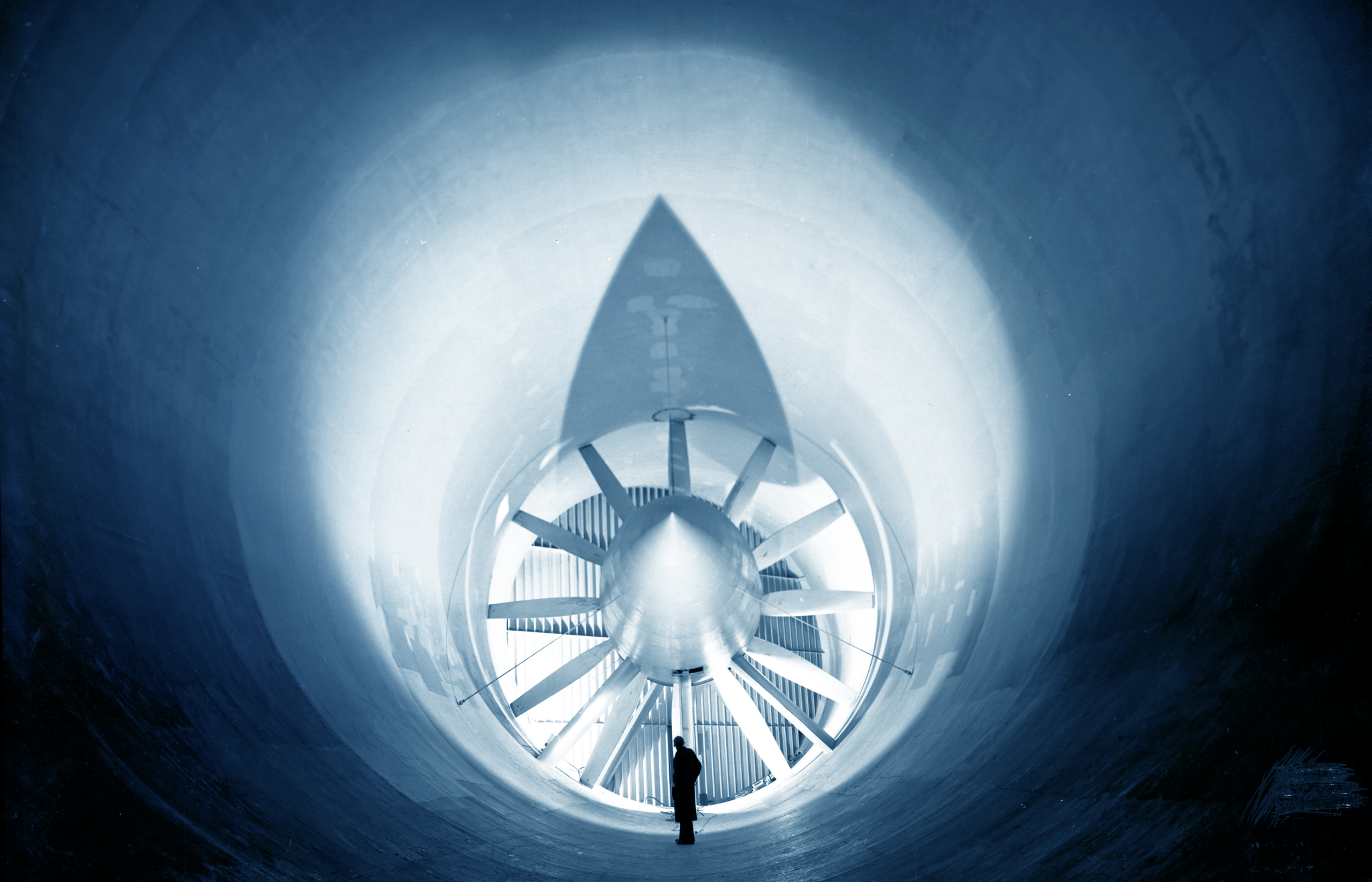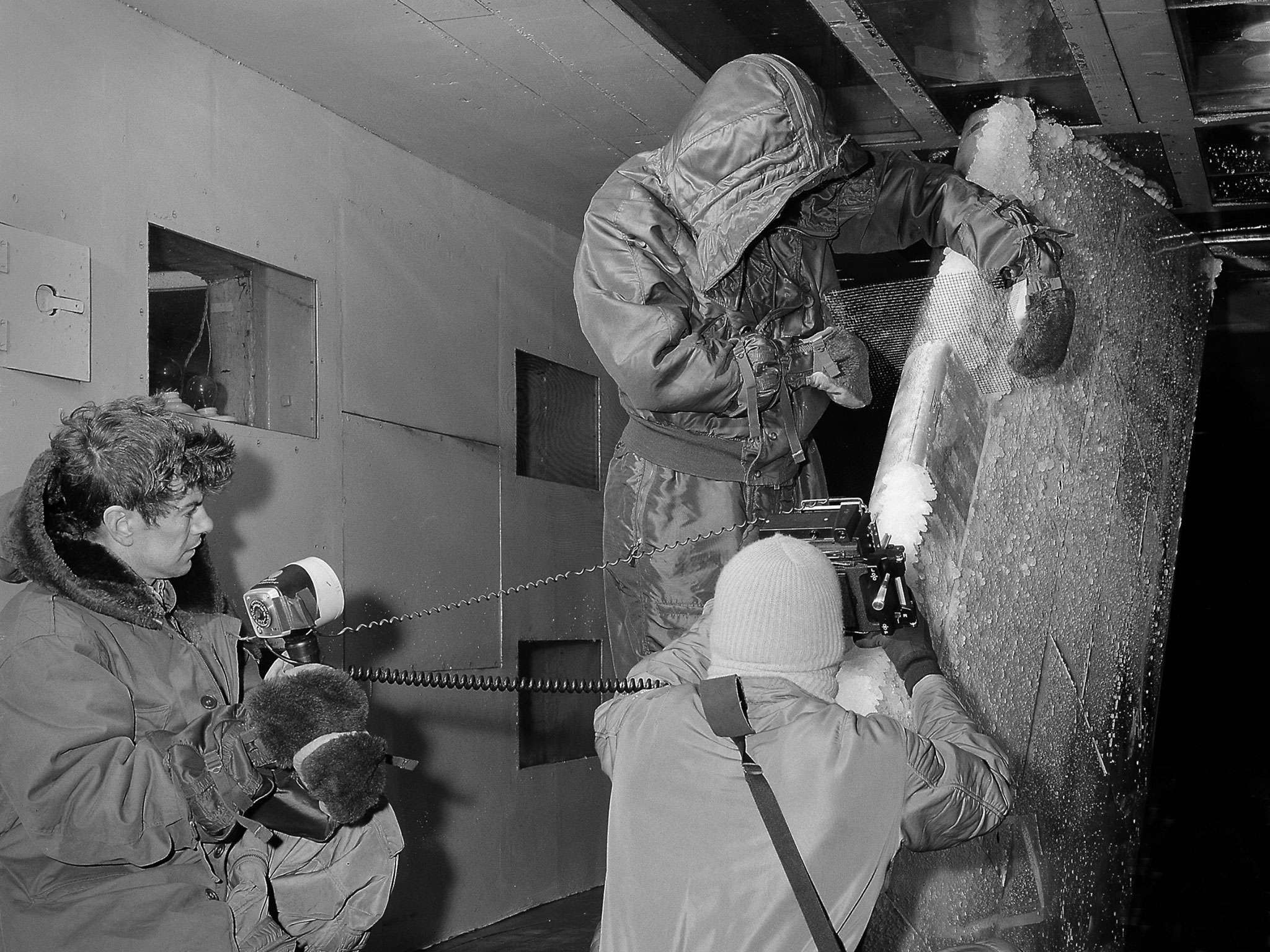Inventor of Air Conditioning Helped Chill NASA Wind Tunnels
Global tensions were high in the fall of 1941 as U-boats harassed ships in the Atlantic and German forces pushed deep into the Soviet Union. There was a critical need for the United States to get the National Advisory Committee for Aeronautics (NACA)’s new engine laboratory (today, NASA’s Glenn Research Center) in operation as soon […]
4 min read
Preparations for Next Moonwalk Simulations Underway (and Underwater)

Global tensions were high in the fall of 1941 as U-boats harassed ships in the Atlantic and German forces pushed deep into the Soviet Union. There was a critical need for the United States to get the National Advisory Committee for Aeronautics (NACA)’s new engine laboratory (today, NASA’s Glenn Research Center) in operation as soon as possible. It was especially important to complete its Altitude Wind Tunnel (AWT), which could be used to improve the engine performance of high-altitude combat aircraft.
NACA engineers were experts in wind tunnel design, but simulating 30,000-foot altitudes to test full-sized engines in the new facility posed several unique challenges. Perhaps the most daunting was chilling the millions of cubic feet of airflow in the tunnel to -47 degrees Fahrenheit. The NACA’s attempts to design adequate cooling coils for the unprecedented system proved ineffectual. To expedite the design process, the NACA convinced Willis Carrier, the nation’s premier refrigeration authority, to design the cooling system for the massive tunnel.
In October 1941, Vannevar Bush, a special liaison between President Franklin D. Roosevelt and the scientific community, set up a meeting between NACA leaders and Carrier, who had invented the world’s first electrical air conditioning unit in 1902. Although Carrier felt that his company was too busy with other military-related projects to bid on the tunnel project, he agreed to meet with those directly involved with the effort on Nov. 6, 1941. The NACA team only discussed the system in broad terms but stressed the importance of the tunnel to national interests.
In the end, Carrier agreed to perform some initial experiments and bid on the project. The NACA was so impressed by Carrier’s confidence and technical acumen that in early 1942 it planned to build a second tunnel, the Icing Research Tunnel, using the AWT’s proposed refrigeration system.

The Carrier Corporation officially began the project in March 1942 as the first tunnel’s foundations were laid in Cleveland. Carrier formed several teams to work on different aspects of the system and built a model of the AWT to test the concepts. They regularly worked 16-hour days to meet the design deadline. As one engineer stated, “Every assignment had to be done yesterday.”
Several new tactics were employed to meet the unique demands of the effort. Engineers designed many of the compressor valves and pumps specifically for the project and decided to use Freon-12, which had never been used on such a large scale, as the refrigerant. The most significant challenge was fitting the required 8,000 square feet of cooling coils into the 2,000-square-foot tunnel section. The solution was to arrange the coils in an accordion-like fashion and add turning vanes across the back to maintain the airflow’s velocity and pressure.

The AWT’s cooling system was installed over the summer of 1943. Carrier and his team were present during the trial runs, and the tunnel began formal operation in February 1944. Its unique ability to test full-scale engines in simulated altitude conditions helped resolve engine cooling issues for the B-29 bomber during World War II and significantly advanced the development of the jet engine in the 1940s and 1950s. NASA converted the tunnel into a vacuum facility in 1963 and eventually shut it down in the 1970s.

The IRT, which came online in late summer 1944, creates freezing clouds to study ice buildup on aircraft components and test de-icing systems. Today, the IRT is the longest running – and among the largest –icing tunnel in the world.
In 1987, the American Society of Mechanical Engineers named the IRT an International Historic Engineering Landmark and noted, “there was never a more difficult, more exacting, or more vital refrigerating system than the one designed and built by the Carrier Corporation for the wind tunnels in Cleveland.”
What's Your Reaction?












































